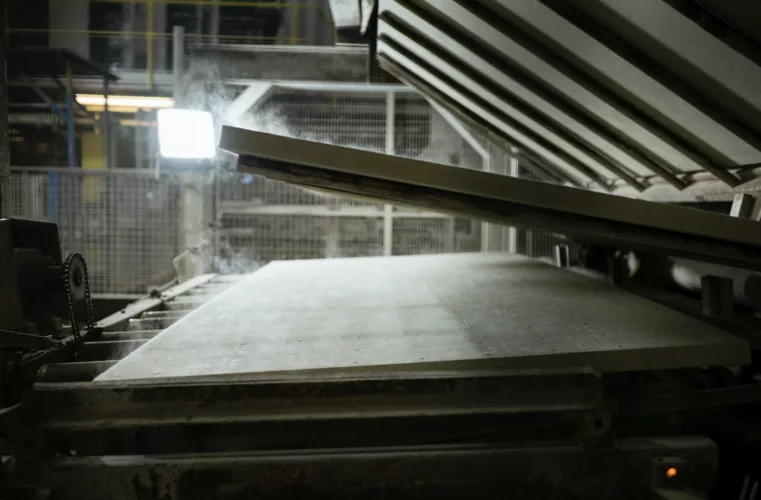Energy management with Etex
In our previous blog, we talked about energy management – the process of collecting energy consumption data, showing pain points and opportunities, and implementing efficient solutions to make your organisation more sustainable and cost efficient. Whether you are a small tech start-up or a manufacturing giant, energy management has something to offer. But what does it have to offer, and how do you start with energy management? In our second blog on this topic, we would like to talk to you about how Etex keeps up with the energy management challenges.

In our previous blog, we talked about energy management – the process of collecting energy consumption data, showing pain points and opportunities, and implementing efficient solutions to make your organisation more sustainable and cost efficient. Whether you are a small tech start-up or a manufacturing giant, energy management has something to offer. But what does it have to offer, and how do you start with energy management? In our second blog on this topic, we would like to talk to you about how Etex keeps up with the energy management challenges.

Introducing Etex
Started in 1905, Etex has been pioneering to become a global leader in lightweight construction solutions. Founded and still headquartered in Brussels, Belgium, Etex quickly expanded throughout Europe and the world. Major acquisitions in fire protection, plaster technology, modular construction and engineering have allowed Etex to contribute to the transformation of the construction industry, building on its purpose to Inspire ways of living.
Etex inspires the world to build safe, sustainable, smart, and beautiful living spaces with a wide spectrum of lightweight solutions. From innovative modular systems to leading fibre cement and plasterboard systems. From applications for cladding, façade, roofing and terrace to high-performance fire protection and insulation for construction and OEM applications.
Process of optimization
Etex is looking to reduce energy costs and improve its operations by using data to make more informed decisions. Their data teams are tasked with collecting and analyzing data from various sources within the company, such as energy usage data from equipment and facilities, and external data sources like weather data and market trends. The goal is to identify patterns, trends, and opportunities for improvement in the company's energy usage and management
- Data collection
The first step to tackle an energy optimization problem is to collect data. To collect this data, Etex uses a, sensors, meters, and data management tools, both on premise and in the cloud. These tools allow us to track and monitor energy usage in real-time, providing data that can be used to identify patterns, trends, and opportunities for improvement. External data such as weather forecasts are used to complement energy management decisions.
- Exploring and visualizing the data
To understand the characteristics of the data, such as its distribution, patterns, and trends. Visualization tools are used. These tools also help communicate the data in a clear and intuitive way. At Etex, data scientists typically begin by exploring the data and gaining an understanding of the production process. Subject matter experts also provide valuable input at this stage by giving context and setting energy reduction targets. As the exploration progresses, patterns between operational regimes and energy consumption become clearer. The team is able to identify the energy consumption per operational regime. For example, production facilities often have periods of downtime when energy is not being consumed. The startup phase after a downtime is typically highly energy-intensive and is a target for optimization efforts. The normal operation regime is the period when most energy is consumed. Improving energy consumption during normal operation can be complex due to its potential impact on product quality. However, even minor improvements in this regime can yield large absolute gains.
- Model Development
To optimize energy efficiency, algorithms that model patterns and make predictions from the data are developed. Typically, the algorithms used are clusters, classifiers, regressors, and anomaly detectors. Collaboration between data science teams, process engineers and shop floor workers are also critical to guarantee the relevance of algorithms. Equipment settings are often decided by operators based on their experience. An experienced operator may outperform a model. However, the strength of a model lies in its consistency over time. Furthermore, experienced operators may not always be available. As a result, a well-developed model can be a valuable tool for optimizing energy efficiency.
- Trials
Testing different models over extended periods of time is a critical step in the pre-implementation process. This allows the team to compare the performance of different algorithms and identify the ones that are most effective. The team can then iterate through tests to improve the performance of algorithms. Iterations are key. They allow the team to refine and improve the models over time. In addition to testing and iterating on the models, the team may also need to collect additional data and incorporate new insights from subject matter experts to further improve the models. This can help to ensure that the models are based on the most up-to-date and relevant information and are able to provide accurate and useful predictions.

Etex case of downtime analysis
We provided advice to Etex on reducing energy consumption at their plants. Through our analysis, we found that after every downtime, there was an excessive consumption of energy. Corrective actions were taken to mitigate these losses. As Etex continues their energy optimization journey, they will also work with teams of data experts and process experts, as previously mentioned. Investing in the growth of these teams internally will provide significant returns.
The primary goal of the use case with Etex was to reduce the energy consumption of the plasterboard production dryer. The main contributor to energy consumption was gas, so our analysis focused on gas consumption during the production process.
We took the following steps:
- Understanding the data to determine which features were useful and the meaning behind the values.
- Examining the correlation between different parameters and determining the significance and usefulness of these relationships.
- Labeling the data according to different segments of the process.
- Examining the consumption during "stops," or periods of time where there is no production, but the plant is still active.
- Concluding that providing more insight into the process for all stakeholders in the production process would be more effective in the short term.
Next steps for Etex
Next steps for Etex in their energy management roadmap include collecting data from more equipment, implementing higher level dashboards, focusing on continuous improvement, engaging with stakeholders, and monitoring and evaluating progress. These steps can help the company gain a more comprehensive view of their energy usage, make more informed decisions, and drive progress in their energy management efforts.
Conclusion
Energy Management is the systematic use of digital technology to manage and improve the energy consumption of the organisation, and it’s a useful exercise not only for those in the manufacturing industry, but for all companies, big and small. It’s a quick, effective, practical way of determining points for improvement, reducing costs, increasing energy efficiency, and becoming a more sustainable organisation!
Curious on how Mayker helped other customers, or ready to optimise your energy use? We can help you every step of the way - from first analysis to identifying opportunities and implementing the right solutions. Get in touch to discuss energy management in more detail!
Alejandro Simó
Digital Manufacturing Consultant
“Seeking to guide manufacturing companies on their road to digitalization”


